

The DFT has a variety of important properties. These properties help us to understand the results of some image processing operations.
In this lesson we illustrate some of these properties.

Rotating f(x,y) by the angle theta, also rotates the DFT F(u,v) by the same amount. Intuitively, looking at the DFT as a recipe of how to build the original image by combining its fundamental waves, we can see that we need to rotate all waves to obtain a rotated image.

|
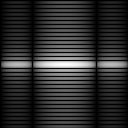
|
|---|---|
| a) | b) |
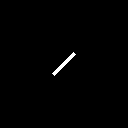
|
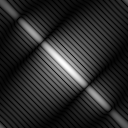
|
|---|---|
| a) | b) |

The DFT is a linear operator, the following is verified:
k1 f(x,y) + k2 g(x,y) <==> k1 F(u,v) + k2 G(u,v)
which is illustrated below:

| 
| 
|
|---|---|---|
| a) | b) | c) |

| 
| 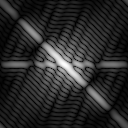
|
|---|---|---|
| a) | b) | c) |

Translating the original image by (x0,y0), the spectrum of the DFT of the translated image will be same as the original image, but having its phase changed:
![]()
Intuitively, we can see that the fundamental waves to construct the image are all the same, but they have to be positioned differently.

| 
| 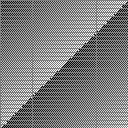
|
|---|---|---|
| a) | b) | c) |

| 
| 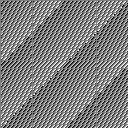
|
|---|---|---|
| a) | b) | c) |
Translating the original DFT by (u0,v0), we have a similar equation:
![]()
This property is used when displaying the Optical Fourier Spectrum. A translation of (N/2, M/2) in F(u,v) is equivalent of multiplying f(x,y) by (-1)**(x+y). See in the proposed exercise list.

Expanding the original image by a factor of n, filling the empty new values with zeros, results in the same DFT, but replicated as if we were looking the original DFT with a larger "window", remembering that the DFT is periodic.


|

|
|---|---|
| a) | b) |
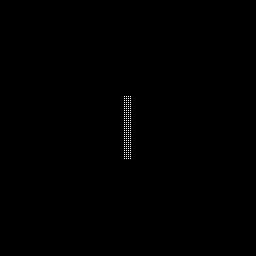
|
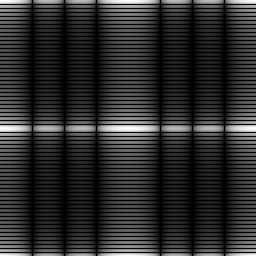
|
|---|---|
| a) | b) |
The same property works for the DFT:

This property can be used for creating a large image from a replication of a small pattern. See the list of proposed exercises.